A Binary MLM Plan is one of the best and most popular MLM plans out there. It is comparatively easy and more convenient to use. The two-legged plan balances both business and distributor growth simultaneously. MLM companies with binary compensation plans use a binary MLM software for effective management of their processes.
What is Binary MLM Compensation Plan?
The binary MLM plan is a compensation structure which consists of two legs [left leg and right leg] under every distributor. By adding subtrees [the two legs] a binary tree is formed. New members are joined after them and are spilled over to the downlines and this process continues to unlimited levels.
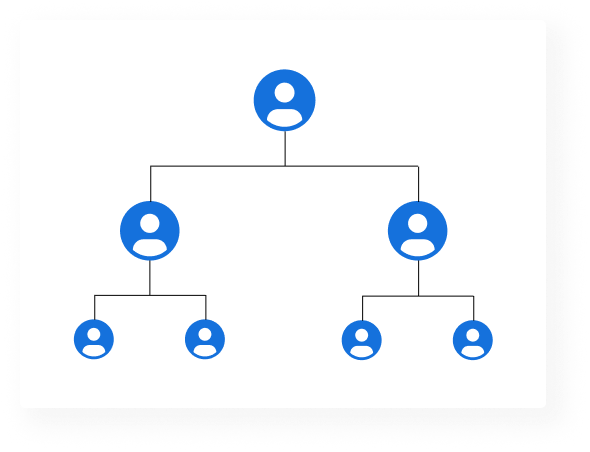
This compensation plan has always been the favourite plan of all start-up MLM businesses because of its simple structure and is easily understandable. MLM companies that use binary MLM compensation plans need proper management. An intelligent Multi-level marketing software helps companies manage, control and organise their binary MLM network easily.
How Does a Binary MLM Plan Work?
Binary MLM plan is a network marketing strategy used by top MLM companies. The two new members sponsored by the distributor automatically go under either of the legs. By adding members on either side of the subtree, a binary tree gets formed. All the members after forming a binary tree get spilled over to the downline.
Distributors become a part of the binary plan by purchasing either a service or list of products.
Now let's look at how a binary MLM plan works with examples.
Example 1: Distributor X sponsors A, and A then sponsors a new member B. B gets added on the left leg of A on the binary tree. B becomes the direct downline member. Distributor A then adds C to his right leg. The binary tree of A is formed and he gets commissions. Here distributor A is the 'sponsor' as well as the 'parent' of B and C.
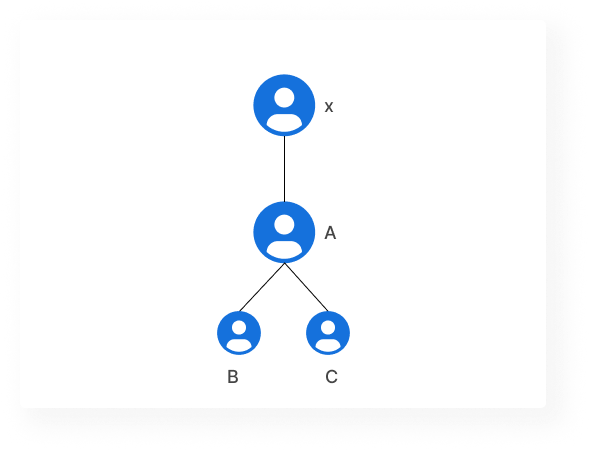
Example 2: Distributor X sponsors distributor A. Distributor A then adds a new member B, but B is added to the right leg of the binary tree because the left side was already acquired by distributor Y sponsored by X. Here the sponsor of X is A but the parent is B.
Another information we get from here is that a binary tree may form based on their own efforts or from the members spilled over from the uplines. A binary tree is infinite; it never gets completed.
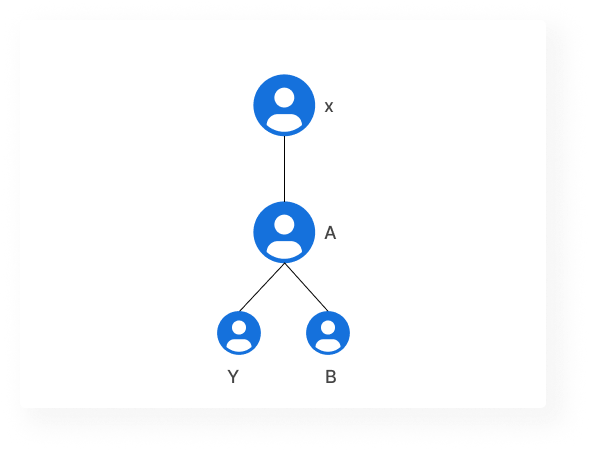
Example 3: Distributor X adds two new members A and X1. They were added to both legs as they were vacant. Distributor A sponsors a new member B to the right leg. Meanwhile, distributor X sponsored Y and Z. Here Y got added on the left position under A but Z got added below right to X1. Distributor X can add Y on the left leg under A but not under the right leg.
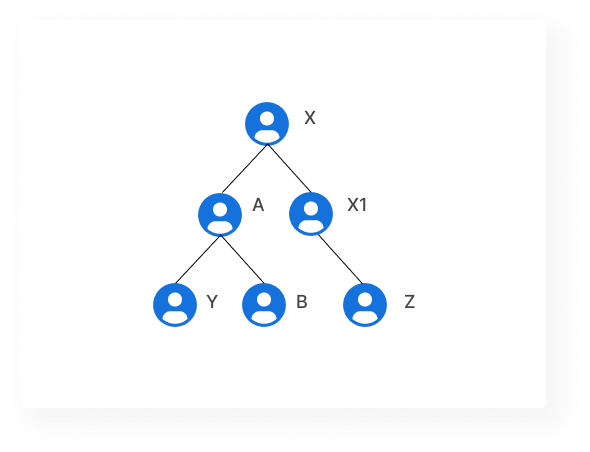
Binary Spillover Preferences
The spillover preferences vary from one MLM company to another.When the first level of binary tree is formed, then the next members will automatically spill over to the next level.
Spill preferences:-
Extreme left or right spill: This spillover can be set either to the left or right leg. Distributors get commissions only once they balance the tree by making sales on the paired leg.
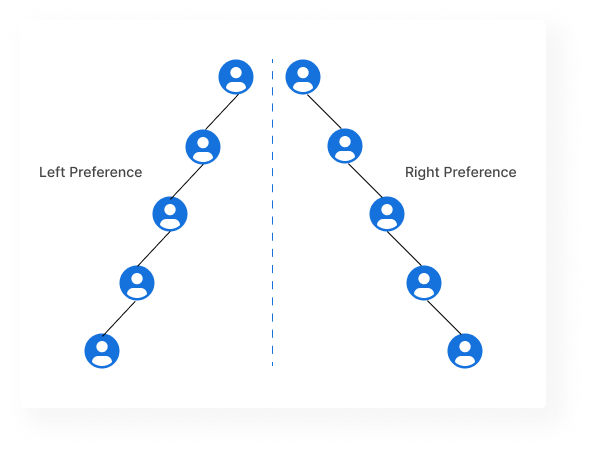
-
Weaker side leg spilling: New members are added under weaker legs. It may be left or right
depending on the sales.
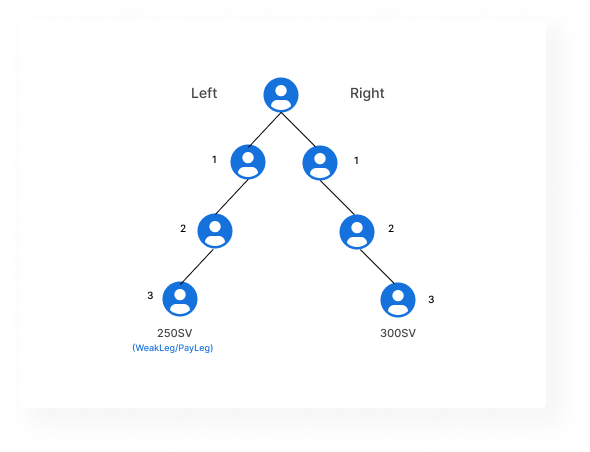
-
Balanced spilling: The members are added on the basis of left-right combination.
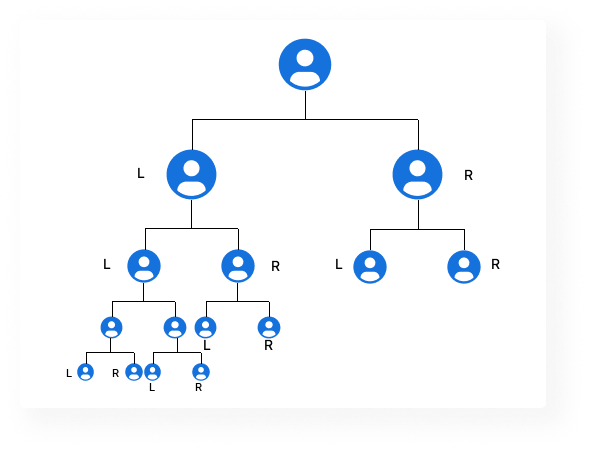
-
Multiple position spilling: The first three members complete a tree and the rest members are
spilled over to the next available places.
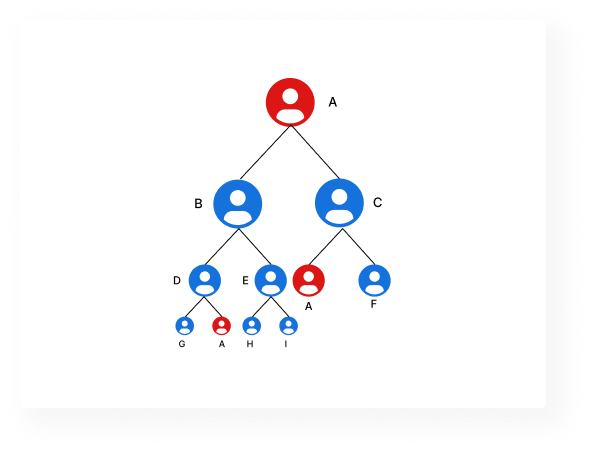
Advantages of Binary MLM Compensation Plan
- The simplest compensation plan and easy to understand
- A binary MLM plan can add an infinite number of people
- A binary plan provides rapid business growth opportunities
- Teamwork prevails above anything in binary MLM compensation plan
- Benefit from both upline and downline members
- A binary MLM plan is hybrid
Disadvantages of Binary Mlm Compensation Plan
- You will have to work harder if your sponsor is not strong enough. If so, your legs will not get any spillover and balancing becomes difficult
- Because of the spillover system, when associates of the other legs get weaker, your recruiter will be treated as a spillover for them
- Lazy associates will sit back and you will have to do work for them
- Every new member will want to join your stronger leg
Binary Commission Calculation
1. Weak leg-based commission:
Binary commissions are paid based on the leg with the least volume.
Example: The downline of distributor X are A, B, C, D, and E. Here, A, C, and D are in the left leg whereas B and E are in his right leg. The left leg made an SV [sales volume] of 500 and the right leg of 1100 SV.
SV is less on the left leg hence, it is the weak leg, and the right leg with higher SV is the strong leg
Calculations are made on weak legs i.e, 500 SV. So if the bonus is set to 10% then the bonus will be 10% of 500 SV which is equal to $50.
The rest of 600 SV is on the right leg after the bonus calculation is carried forward to the next binary plan.
2. Sales ratio-based commissions:
Some companies set commission payout criteria based on sales ratio. The most common sales ratios in the binary scheme are,
- 1:1 sales ratio
- 1:2 or 2:1 ratio
- 2:3 or 3:2 ratio
1:1 sales ratio: Commissions are paid when the sales volume of the left and right leg matches a 1:1 ratio.
1:2 or 2:1 ratio:Commissions are paid when the left and the right leg achieve 1:2 or 2:1 sales volume.
2:3 or 3:2 ratio: Commissions are paid when the left and the right leg achieve 2:3 or 3:2 sales volume.
